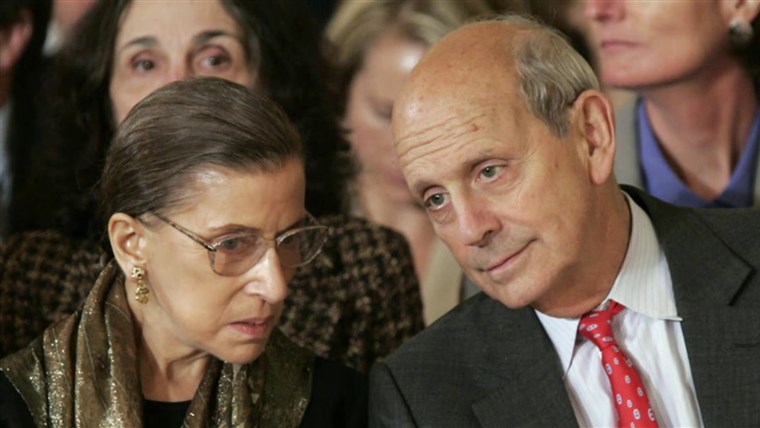More Fun with SCOTUS

Support for better gun laws was a winning platform for the 2018 midterms, signaling an encouraging “shift on gun control,” and the 2020 election of Joe Biden was hailed by gun-violence prevention (GVP) group Everytown For Gun Safety as a “victory for the gun safety movement and a colossal loss for the NRA.” At long last, it felt like the tide was starting to turn.
But over the past year, even the most basic gun-control agenda has grown impossibly beyond reach. Though Democrats control all three branches of government, Biden’s gun reform efforts have been limited to a series of largely ceremonial executive orders. In a stinging rebuke, the president was forced to withdraw his nomination of David Chipman to lead the Bureau of Alcohol, Tobacco, Firearms, and Explosives after Chipman’s advocacy for gun control led to bipartisan resistance in the Senate. Meanwhile, growing numbers of states have pursued pro-gun legislation that once seemed fringe and radical—for example, a Texas law allowing people to carry handguns without permits, and efforts by Missouri politicians to declare federal gun laws “invalid.”
Things may soon get exponentially worse. A case that goes before the Supreme Court on November 3, New York State Rifle & Pistol Association Inc. v. Bruen (previously New York State Rifle & Pistol Association Inc. v Corlett) challenges a New York law that requires individuals to get a license to carry a concealed firearm outside the home. At stake is whether blue states and cities like New York, Los Angeles, and Boston have the right to enact laws that regulate guns in public spaces, or whether Second Amendment rights are as sacrosanct as First Amendment ones, above being nuanced by local regulations.
…
Nearly a decade of activism, forged in the aftermath of horrific U.S. mass shootings, advocated not for the repeal of individual gun rights, but for laws that would keep schools, workplaces, concerts, and other public locales safer from gunfire. Voices of people fed up with gun death were so powerful following the 2012 Sandy Hook Elementary School massacre that even staunchly pro-gun politicians like Senator Marco Rubio’s called for a “comprehensive study” of gun laws. Public safety again became the rallying cry six years later in nationwide March for Our Lives protests in the weeks and months following the Marjory Stoneman Douglas High School shooting in Parkland, Florida. Those marches were widely described as a potential “tipping point” for gun reform. NRA spokeswoman Dana Loesch was booed when she appeared at a CNN town hall with survivors of the shooting.
And indeed, the United States has a long and vital history of interpreting the Second Amendment in ways that balance gun rights with efforts to reduce violence in public places. The Heller decision’s support of “longstanding prohibitions on the possession of firearms by felons and the mentally ill, or laws forbidding the carrying of firearms in sensitive places such as schools and government buildings” built on bedrock U.S. law, practice, and tradition allowing states to regulate firearm possession and use in public because of the dangers posed to public safety. For instance, during the Founding Era, many states prohibited the use of firearms “on certain occasions and in certain locations.” North Carolina prohibited going armed “in fairs, markets, nor in the presence of the King’s Justices, or other ministers, nor in no part elsewhere.” In the nineteenth century, states such as Tennessee banned concealed weapons but made exception for any person who was on a dangerous journey “to any place out of his county or state.”
All of that and more is up for grabs with the current Court case, and past opinions and dissents by Trump’s three expressly pro-gun justices give serious reason for concern. As a lower-court judge, Brett Kavanaugh wrote a scathing dissent in a pivotal 2011 Second Amendment case, when the D.C. Circuit Court upheld a District of Columbia ordinance banning most semiautomatic rifles. He argued that Washington, D.C., could not ban semiautomatic rifles on its streets because the right to bear arms superseded its interest in public safety. Neil Gorsuch’s appointment was buoyed by a $1 million ad campaign by the National Rifle Association. Amy Coney Barrett supports an expansive Second Amendment and has argued against the government’s right to “deprive” gun rights to persons convicted of certain crimes.
A ruling against New York could overturn a decade of Second Amendment precedents in ways that unravel gun regulations in cities and states across the United States by rendering many lower-court rulings and state gun laws unconstitutional. “I wish people would wake up about this,” a state-level Democratic politician in Tennessee told me when we discussed this possibility. “Any gun control law could possibly be at risk, from laws that make it harder to keep guns away from domestic violence offenders to safe storage laws to maybe even background checks.” Vox’s Ian Millhiser puts it succinctly: “The future of gun control in the United States could be quite grim—and Bruen could mark the moment when lawmakers’ power to fight gun violence falls apart.”
As with many Boston Review essays, this is a long-form and multifaceted piece that I recommend people read in its entirety. Among other things, it explores how there is an increasingly desire among liberals to own guns too since why should the cops and crazy people have them all. A fully armed society would be a complete disaster. But that’s the disaster the Supreme Court is going to force on us. But hey, they totally aren’t political hacks, amirite?
